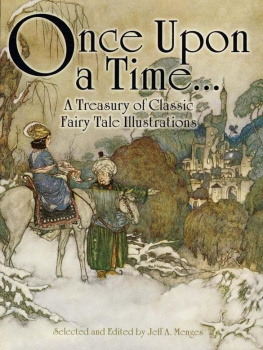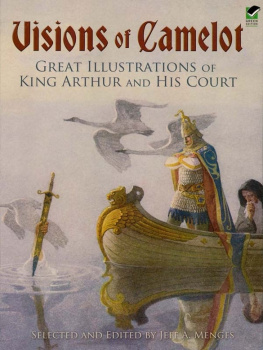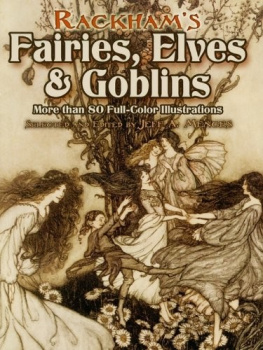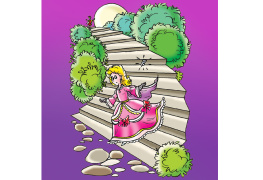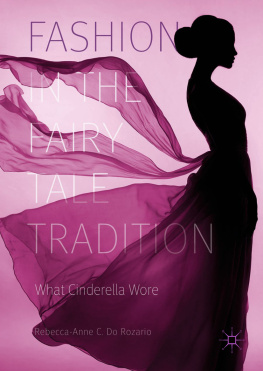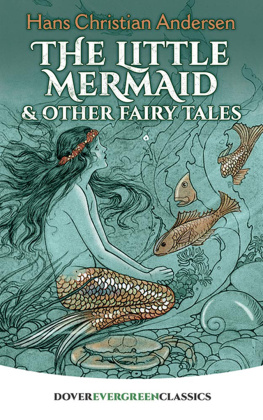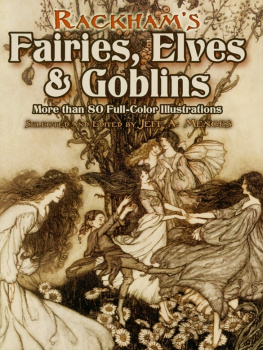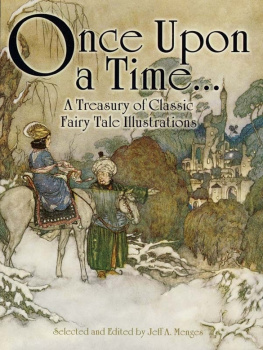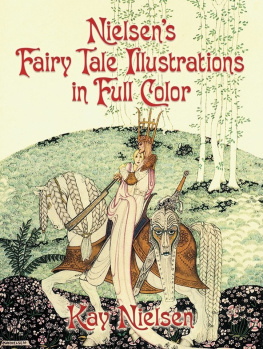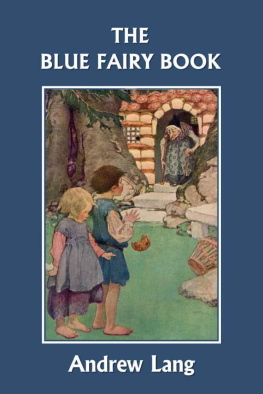
I used to meet her in the garden, the ravine, and in the manor fields. She was always picking flowers and herbs, those she knew her father could use for healing drinks and potions.
From The Winds Tale
Dulacs Fairy Tale Illustrations
In Full Color
Selected and Edited by Jeff A. Menges

Princess Scheherazade, The Heroine of the Thousand-and-one nights, ranks among the greatest storytellers of the world From Tales of the Arabian Nights
Dover Publications, Inc., Mineola, New York
Copyright
Copyright 2004 by Dover Publications, Inc.
All rights reserved.
Bibliographical Note
This Dover edition, first published in 2004, is an original compilation of illustrations from the following works: The Sleeping Beauty and Other Fairy Tales (published by Hodder & Stoughton, Ltd., London, 1910); Stories from Hans Andersen (published by Hodder & Stoughton, Ltd., London, 1911); Princess Badoura (published by Hodder & Stoughton, Ltd., London, 1913); Sindbad the Sailor and Other Stories from the Arabian Nights (published by Hodder & Stoughton, Ltd., London, 1914); Edmund Dulacs Fairy Book (published by Hodder & Stoughton, Ltd., London, 1916); Stories from the Arabian Nights (published by Hodder & Stoughton, Ltd., London, 1916); and Edmund Dulacs Picture Book (Hodder & Stoughton, Ltd., London, 1916).
Library of Congress Cataloging-in-Publication Data
Dulac, Edmund, 18821953.
Dulacs fairy tale illustrations in full color / selected and edited by Jeff A. Menges.
p. cm.
ISBN-13: 978-0-486-43669-2 (pbk.)
ISBN-10: 0-486-43669-1 (pbk.)
1. Dulac, Edmund, 18821953. 2. Fairy talesIllustrations. I. Title: Fairy tale illustrations in full color. II. Menges, Jeff A. III. Title.
NC978.5.D84A4 2004
741.64092dc22
2004052694
Manufactured in the United States by Courier Corporation
43669106
www.doverpublications.com
Introduction
Edmund Dulac is remembered most for the body of work he produced during a single decade of his life at the start of his artistic career. Born in Toulouse, France, in 1882, Dulac displayed an interest in art at an early age. He had a passion for the exotic, notably the artistic styles and stories of distant lands. This appetite was nurtured by the artwork and prints that his father brought home from his travels for young Edmund to study. He also loved the works of English artist-illustrators, such as Walter Crane, William Morris, and Aubrey Beardsley. To see the dazzlingly detailed characters and settings in the visionary art of Edmund Dulac, it is hard to fathom that he had finished his second year of law school before committing himself to becoming an illustrator.
At the start of the twentieth century, new developments in printing technology made color reproductions available at a reasonable cost for the first time. Thus was born a demand for color illustrators, and the new industry flourished. In the autumn of 1904, newly settled into London from France, the 22-year-old French illustrator launched his search for magazine work. After only a few weeks in London, displaying an incredible eagerness and an armful of drawings, Dulac was hired by publisher J. M. Dent to provide sixty color pieces to illustrate the complete works of the Bront sisters. Jane Eyre was his first volume, and the twelve pieces in this group were well received, sending Dulac on his way to becoming one of the premier artists of the Golden Age of book illustration.
During the Christmas season of 1905, William Heinemann, a prominent London publishing house, signed Arthur Rackham to illustrate a gift-book edition of Washington Irvings Rip Van Winkle. The book had fifty-five color plates, and was a tremendous success for both artist and publisher. Hodder and Stoughton, Heinemanns biggest competitor, decided to compete on this new level, and Dulac was the right person for the job. In an unusual arrangement with Liecester Galleries, Hodder and Stoughton signed Dulac, who went on to produce gift books for them annually for the next ten years. It is this body of work that the present volume examinesspecifically, the variety of fairy tale illustrations done by Dulac during the Hodder and Stoughton years. Edmund Dulac was the perfect artist to explore the mysterious, romantic tales of the Arabian Nights and Sindbad, his delicate line work and jewel-toned palette bring to life Hans Christian Andersens tales.
As a result of the publication of these books, Dulacs artistic growth and reputation both flourished. It seemed as if his future was set, but World War I put an end to this annual routine. Paper had become a premium during the war, and publishing outside of the war effort was significantly curtailed. In the years during the war, Dulacs work appeared in a number of books sponsored to raise money for the war effort. These years were a great strain on both Dulac and his wife, both mentally and financially.
Toward the wars end, as well as afterward, Dulac became involved with a number of theatrical productions, doing scenery and costume designs. In 1918 he produced what would be his last book for Hodder and Stoughton, Nathaniel Hawthornes Tanglewood Tales. Book illustration in the style for which Dulac was known was much less in demand, forcing him to find work in other areas of the graphic arts. His later endeavors included caricature, portraiture, package design, and a good deal of work in stamp and bank note design. From 1924 until 1949, he had an association with Hearst Newspapers The American Weekly, from which he earned the majority of his income at that time. Dulac was actively working up until his death in 1953.
Jeff A. Menges
May 2004
For Jenny
List of Plates
Frontispiece I used to meet her in the garden, the ravine, and in the manor fields. She was always picking flowers and herbs, those she knew her father could use for healing drinks and potions. From The Winds Tale, S TORIES FROM H ANS A NDERSEN
Note: Titles of the books in which the stories originally were collected, plate captions, and titles of the stories containing the plates, are given below.
T HE S LEEPING B EAUTY AND O THER F AIRY T ALES
[Hodder & Stoughton, Ltd., London, 1910]
I am spinning, the pretty one, answered the old woman, who did not know who she was. (The Sleeping Beauty)
But news of it was brought to her by a little dwarf, who owned a pair of seven-league boots. (The Sleeping Beauty)
They grew until nothing but the tops of the castle towers could be seen. (The Sleeping Beauty)
They were rowed to the sound of music on the waters of their hosts private canal. (Blue Beard)
They overran the house with loss of time. (Blue Beard)
You SHALL go in, and take your place among the ladies you saw there! (Blue Beard)
She used to creep away to the chimney-corner and seat herself among the cinders. (Cinderella)
And her Godmother pointed to the finest of all with her wand. (Cinderella)
She was driven away, beside herself with Joy. (Cinderella)
The Kings son led her through the gardens, where the guests drew apart and gazed in wonder at her loveliness. (Cinderella)
Whereupon she instantly desired her partner to lead her to the King and Queen. (Cinderella)
She made her escape as lightly as a deer. (Cinderella)
The Prime Minister was kept very busy for the next few weeks. (Cinderella)
After she had done her work, [she] would sing and play. (Beauty and the Beast)
Soon they caught sight of the castle in the distance. (Beauty and the Beast)
Next page

